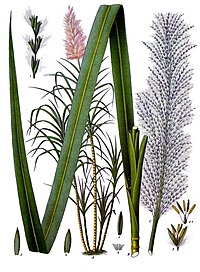
Photo from wikipedia
Abstract Varied strategies to alleviate the loss of farmland biodiversity have been tested, yet there is still insufficient evidence supporting their effectiveness, especially when considering phylogenetic and functional diversity alongside… Click to show full abstract
Abstract Varied strategies to alleviate the loss of farmland biodiversity have been tested, yet there is still insufficient evidence supporting their effectiveness, especially when considering phylogenetic and functional diversity alongside traditional taxonomic diversity metrics. This conservation challenge is accentuated in the Afrotropics by the rapid agricultural expansion and intensification for the production of cash crops and by a comparative lack of research. In this study, we assessed how farming practices influence avian phylogenetic and functional diversity. We conducted point‐count surveys to assess avian diversity in monocultures of tea and mixed crop farming systems surrounding the Nyungwe rainforest in south‐west Rwanda, allowing us to investigate the drivers of avian diversity at farm level. Species composition was found to be moderately different between farm types, with mixed crop farms supporting higher phylogenetic diversity than tea plantations. There were no significant seasonal differences in species composition, functional or phylogenetic diversity. Overall, functional diversity did not differ between farm types, but the dispersion of trophic‐related traits was significantly higher in mixed crop farms. Both functional and phylogenetic diversity were influenced by floristic diversity, vegetation height, tree number, and elevation to varying degrees. Our results also (i) highlight the role of farmland heterogeneity (e.g., crop species composition, height, and tree cover extent) in encouraging avian functional and phylogenetic diversity in the Afrotropics and (ii) indicate that the generally negative biodiversity impacts of monoculture agriculture can be partially alleviated by extensive agroforestry with an emphasis on indigenous tree species.
Journal Title: Ecology and Evolution
Year Published: 2022
Link to full text (if available)
Share on Social Media: Sign Up to like & get
recommendations!